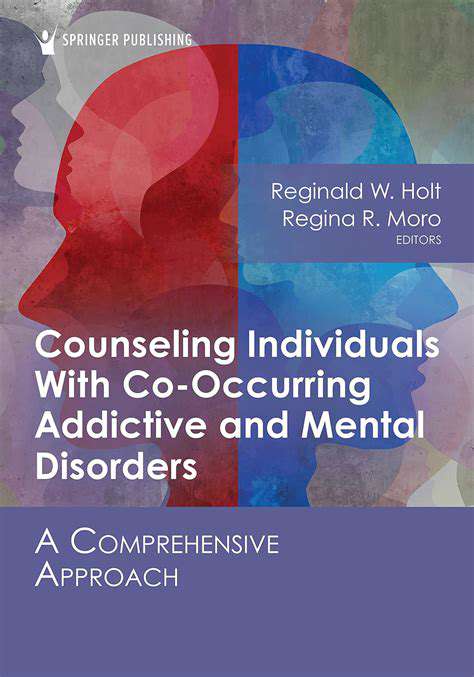OCD Symptoms According to DSM 5: A Comprehensive Guide
Defining Compulsive Behaviors
Compulsive behaviors, a hallmark of Obsessive-Compulsive Disorder (OCD), consist of repetitive actions individuals feel compelled to execute in reaction to intrusive thoughts. These actions don't provide pleasure but instead offer temporary relief from the distress triggered by obsessive thinking. Grasping the essence of these behaviors proves vital for understanding how the disorder disrupts everyday functioning.
Typically, these rituals follow rigid personal rules, and deviation from them often sparks intense anxiety. The compulsive act becomes deeply ingrained in the person's daily patterns, perpetuating the obsessive-compulsive cycle.
Obsessions and Their Relationship to Compulsions
Obsessions represent persistent, unwanted thoughts, mental images, or urges that provoke significant distress. These intrusive experiences feel beyond the individual's control, driving them toward compulsive behaviors as coping mechanisms. The intricate connection between obsessions and compulsions forms the core of OCD's pathology, with compulsions serving as anxiety-reduction strategies.
Common Types of Compulsive Behaviors
OCD manifests through diverse compulsive patterns. Frequent examples include:
- Excessive cleaning or handwashing
- Repeated verification of locks or appliances
- Precise object arrangement
- Counting rituals
- Compulsive hoarding
These behaviors frequently disrupt normal routines, social engagements, and overall quality of life. Early recognition of these patterns facilitates timely intervention.
The DSM-5 Criteria for Compulsive Behaviors
The Diagnostic and Statistical Manual of Mental Disorders, 5th Edition (DSM-5) establishes clear diagnostic benchmarks for OCD, including compulsive behaviors. These criteria require both obsessions and compulsions, with the latter aimed at mitigating obsession-related anxiety.
The manual emphasizes the substantial distress and functional impairment caused by these symptoms, highlighting the necessity for professional evaluation and treatment.
The Impact of Compulsive Behaviors on Daily Life
OCD's compulsive elements can profoundly affect everyday existence. Individuals may devote excessive time to rituals, withdraw socially to avoid triggers, or struggle with occupational and academic performance. The cumulative effect often includes strained relationships and considerable emotional turmoil.
The Role of Anxiety in Compulsive Behaviors
Anxiety serves as the driving force behind compulsive actions. The temporary relief obtained from performing rituals reinforces the behavior pattern, creating a self-perpetuating cycle. This reinforcement mechanism makes spontaneous recovery unlikely without professional intervention.
Treatment Approaches for Compulsive Behaviors
Effective treatment strategies for OCD-related compulsions include:
- Cognitive Behavioral Therapy (CBT), particularly Exposure and Response Prevention (ERP)
- Pharmacotherapy (typically SSRIs)
- Combination approaches
Treatment plans should be customized to address individual symptom profiles and circumstances for optimal outcomes.
Severity and Diagnostic Considerations
Severity of OCD Symptoms
Evaluating OCD severity involves more than symptom frequency; it requires assessment of intensity, duration, and functional impairment. Severe cases involve intrusive thoughts that substantially disrupt focus and time-consuming rituals that impair relationships and responsibilities.
Clinicians employ standardized rating scales to quantify symptom severity, enabling consistent evaluation across patients. Since symptoms often fluctuate, regular monitoring proves essential for effective management.
Diagnostic Considerations: Obsessions
Diagnostically, obsessions represent unwanted, recurrent thoughts causing marked distress. Common themes include contamination fears, doubt about completed actions, aggressive impulses, or harm-related anxieties. Proper diagnosis requires distinguishing normal concerns from pathological obsessions based on excessiveness and functional impact.
Diagnostic Considerations: Compulsions
Compulsions involve repetitive behaviors or mental acts performed to alleviate obsession-related distress. Examples range from cleaning rituals to checking behaviors, ordering compulsions, and hoarding. Evaluation must consider both behavioral frequency and their disruptive effects on daily living.
Diagnostic Considerations: Impact on Daily Functioning
A thorough diagnostic assessment examines how symptoms affect:
- Occupational performance
- Academic functioning
- Interpersonal relationships
- Emotional well-being
The degree of interference guides treatment planning and prognostic considerations.
Diagnostic Considerations: Exclusion of Other Conditions
Accurate diagnosis requires differentiating OCD from conditions with overlapping features, including other anxiety disorders, body dysmorphic disorder, and tic disorders. Comprehensive evaluation helps ensure appropriate diagnosis and treatment.
Diagnostic Considerations: Cultural Context
Cultural factors significantly influence symptom expression. Clinicians must consider cultural norms when evaluating behaviors to avoid misdiagnosis. Culturally sensitive assessment enhances diagnostic accuracy and treatment relevance.
